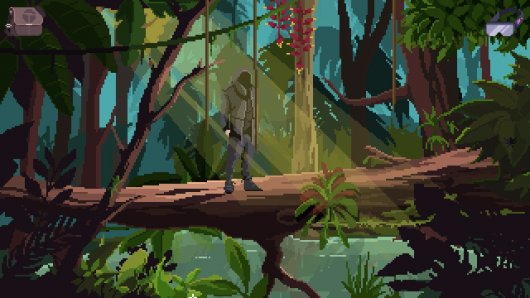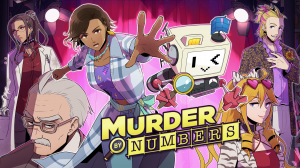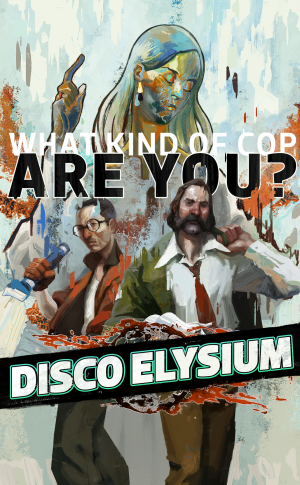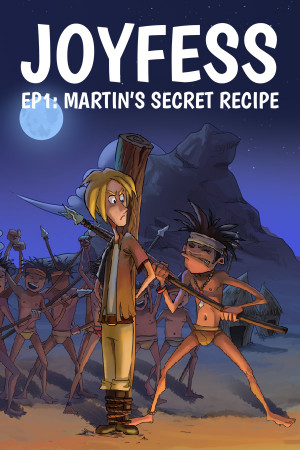Review for VirtuaVerse
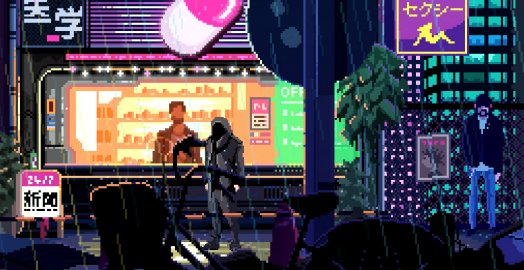
Everything I could glean by perusing pre-release promotional materials for Theta Division Games’ VirtuaVerse seemed to point squarely at it being a futuristic point-and-click adventure with a bleak Blade Runner-esque urban jungle setting drenched in rain and hopelessness. That it definitely is, at least at first, but as much as I thought this was what I wanted – everything I saw immediately roped me into wanting to play it, after all – the game didn’t truly rise to its potential until it broke from this mold. Let down a little by some spotty storytelling, particularly in the early going, once the momentum picks up it manages to provide a memorable world and a hefty yet satisfying old-school puzzle experience.
VirtuaVerse throws you right into its world, with no preamble whatsoever as your avatar awakens in his apartment. Nathan is a blank slate to you, as is the world he lives in; all you know right off the bat is that he has a girlfriend, Jay, who has apparently disappeared from their shared home overnight. While this is a little disquieting to Nathan, his number one priority right now is to find a way to fix the AVR goggles he smashed when he fell out of bed. This headset allows him to interface with augmented reality, which is essentially an extra digital layer added on top of everyday reality that can’t be seen by the naked eye alone. Much of the population has been implanted with microchips, perpetually connecting them to the augmented reality network, though Nathan’s distrust of this modern trend of technology has caused him to abstain from this practice, unwittingly making him the perfect pawn in the impending rise against the new digital status quo.
It’s an interesting premise, to be sure, and it lends itself to some intriguing possibilities. But this cyberpunk future is so different than our own world that more insight would have been appreciated. How did things get this way? What sorts of systems are in place – good, bad, or otherwise – that citizens face on an everyday basis? Maybe most importantly: what role do Nathan and Jay play in this intriguing but as-yet-underdeveloped world?
This is perhaps the game’s biggest issue: while the world is quite interesting, both visually and from a design standpoint, its backstory and narrative development feel somewhat lacking. The same is true for the unvoiced characters driving the emotional drama: Nathan and Jay – the two protagonists through whom we experience the world during their individual playable sections – could have used a stronger, more established bond than what we get over the course of the adventure. Their world certainly evokes interest on a material level, but more refinement was needed with its storytelling aspects.
A few bare-bones background details are established, at least: old-world technology is banned, and there exists an underground resistance movement that rebels against the powers that be, whose authority is represented in a couple of scenes by members of a uniformed, gun-toting agency known as the mag police. But nothing is built upon these facts right away, no glimpse offered into the history of this conflict or how it impacts society; it simply exists. It’s not that everything needed to be established up front, but a happy medium of doling out nuggets of world-building at a steady rate right from the start would have been ideal.
That’s not to say that the world is ever uninteresting; quite the opposite. Visually, Theta Division achieves wonders via the use of pixel art graphics, breathing life into a number of gorgeous settings. The attention paid to detail is commendable, and there are many breathtaking images to soak in across many different locales. Starting with Nathan’s digs in the very first scene, absolutely no on-screen space goes to waste. Environments are easily navigated with a simple smart cursor interface that brings up labels for interactive objects and traveling from screen to screen. Each setting is full of creative oddities to catch our interest, from a seemingly semi-sentient alarm clock by Nathan’s bedside to the macabre husk of a mechanical creature perched on a pyramid of rusted scrap metal like some madman’s resurrected sphinx, posing riddles to passersby and blasting any who are unable to answer with a lethal laser beam. Even some of the more esoteric characters you’ll encounter, like the reclusive Technomancers or the tech guru Cypher Master, are visually striking.
Once Nathan has his AVR goggles repaired, you can turn them on and off with a simple mouse click; engaging augmented reality essentially reveals a virtual skin covering the existing environment. In the urban concrete jungle you begin the game in, for example, this means suddenly seeing garish neon advertisements suspended in mid-air, intricate graffiti art where before there were only QR codes on bare brick walls, and even altered appearances for some of the other characters.
Puzzles aren’t limited geographically to the scenes in which they’re located, often requiring you to backtrack and zigzag back and forth between screens to re-search areas and try out new item combinations. However, there is some progress gating so that the number of available locations is at least somewhat controlled, with parts of the game world becoming permanently inaccessible once the narrative has moved on.
Simply getting Nathan’s goggles repaired means dealing with the game’s considerable challenge. It won’t be long before your inventory is chock full of items you’ve picked up in your travels, some of which will stay with you, unused, for a very long time before finally having a purpose, and others that, so far as I could tell, are never needed at all, and several whose purpose is unclear. I had no idea, for example, what the power glove in my inventory could do, or where best to use it. As a result, it was just one of many inventory items I would randomly and routinely try to use on different objects in the environment when I got stuck, hoping it would interface with one of them and allow me to move on.
With one notable exception the obstacles are never unfair, but VirtuaVerse at times delights in misleading you with red herrings. This requires pausing to assess a situation and consider attacking a problem from as many different and creative angles as possible, maybe even walking away when stuck to return later with a refreshed mindset. Yes, it can be tempting to just look up a walkthrough, but the sweet satisfaction of besting a puzzle you’ve slowly chipped away at until a solution is reached is well worth the perseverance. The game doesn’t sell its challenge short by implementing a hint system either, though there is at least a journal (viewable on a small device strapped to Nathan’s wrist) that keeps track of current tasks.
After scuffling along through its rather tepid start, at a certain point – call it about a third of the way through the game – two things happen. Out of nowhere, the story decides you’ve had enough of the small, inconsequential objectives you’ve been working towards, and it’s time to finally introduce the central conflict. In order to do this, it throws a jargon-heavy info dump at you, which doesn’t go over terribly well. However, the long-overdue introduction of stakes that truly matter gives you something to become invested in, and a larger goal to work towards.
It turns out your AVR goggles really aren’t a big issue in the grand scheme of things when you’re being called on to save the world from a megalomaniacal AI that’s out to enslave the digi-hypnotized populace. This better-late-than-never reveal would have benefited from a tighter narrative framework, but it’s precisely the move the story needs to allow you to latch onto it better, which pays huge dividends in terms of enjoyment from there on out (right up to the sudden ending that concludes things with a bit of a jarring turn).
The other change that separates the opening hours of VirtuaVerse from what follows is how the game begins diversifying its environments considerably, moving away from the pink-, purple- and blue-tinged rain-slicked city streets, and granting access to settings not normally associated with dystopian science fiction. Lush steamy jungles, frozen ice fields, and parched scraplands heaped with discarded old-world technology are some of the new environments the game takes you to, eventually even letting you deep-sea dive and visit space.
I was looking forward to spending a whole game in a smog-choked city going in, but the game designers apparently knew better. These changes of scenery work really well, letting the top-notch graphics explore different and (sometimes) brighter color palettes while allowing the composer to experiment with different musical flavors. What starts out as a score composed of highly repetitive techno synthesizer tracks on overly short time loops benefits greatly from having a larger variety of moods and locations to represent. Stepping out of its early constraints, the soundtrack is able to incorporate, for example, a still-synth tribal jungle beat or a digitized version of a pirate sea shanty, becoming far more enjoyable in the process and even ending up with one or two extremely catchy tunes stuck in your head.
While VirtuaVerse successfully manages to overcome its early world-building weaknesses, there is one remaining quibble worth mentioning. Say what you will about challenging inventory-based point-and-click puzzles – and VirtuaVerse’s difficulty does continue to remain considerable throughout – but there came a point when the game may have, for lack of a better term, jumped the shark a bit. In a series of hard nuts to crack, one particular puzzle involving a digital cypher and semi-randomized nonsense riddles is so poorly clued that, shortly after it’s solved, even Nathan himself brings up how ridiculous and unnecessary it was. Since the developers clearly knew that this puzzle would surely be a bone of contention among players, it’s a wonder no steps were taken to contextualize it a bit better.
Even with some missteps out of the gate, VirtuaVerse goes on to become a fun and challenging old-school point-and-click adventure with impressive production values that should last between ten and fifteen hours. It takes full advantage of its dystopian future setting by infusing the ability to delve into augmented reality as an integral part of the world exploration and puzzle solving. This world and the characters that inhabit it aren’t as fleshed out as they could be, and I sincerely hope the developer’s future efforts will give these elements the focus they need to complement the imaginative and memorable design aesthetic established here. Nevertheless, once the game catches its groove, it hits almost all the right notes from that point forward. Like some of the science fiction greats that almost certainly inspired it, it’s a bit of a slow burn that should ultimately satisfy those with the patience to puzzle their way through.


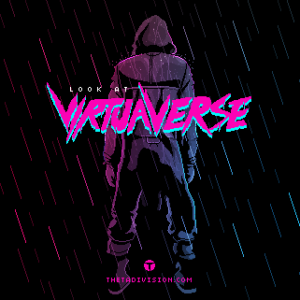



__large.png)

